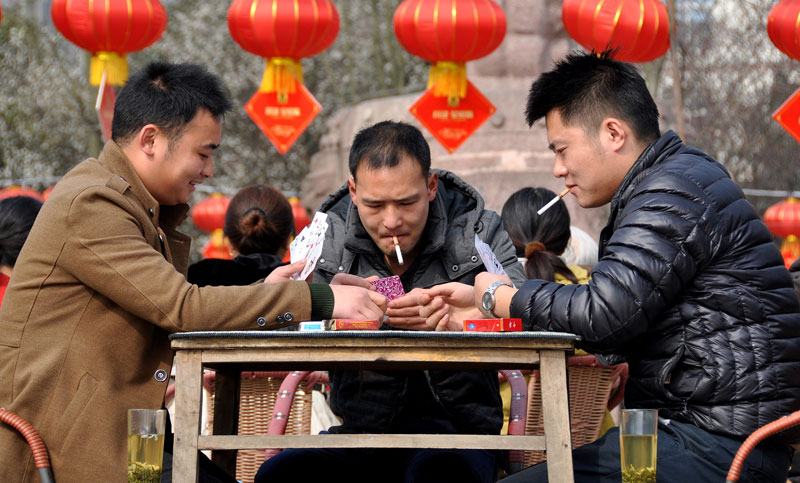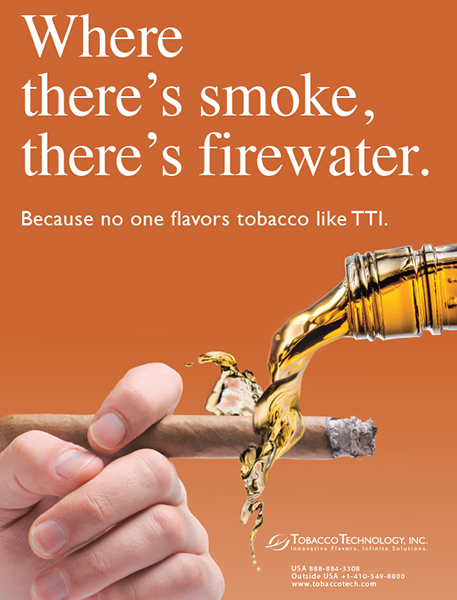The Contortionists
- Print Edition
- January 1, 2021
- 0
- 2
- 15 minutes read


Committing to the FCTC objectives while manufacturing cigarettes requires extraordinary moral acrobatics.
By Stefanie Rossel
Since entering into force in 2005, the World Health Organization (WHO) Framework Convention on Tobacco Control (FCTC) has suffered from an inherent, difficult-to-reconcile conflict: While the treaty requires signatories “to protect present and future generations from the devastating health, social, environmental and economic consequences of tobacco consumption and exposure,” 17 of its 182 member states own at least 10 percent of a tobacco company.
Eight countries—China, Iran, Iraq, Lebanon, Syria, Vietnam, Thailand and Tunisia—own 100 percent of at least one tobacco company. Together, these states control almost 50 percent of the global tobacco industry by volume. In Algeria, Bangladesh, Egypt, India, Japan, Laos, Malawi, Moldova and Yemen, governments own between 13 percent and 91 percent of tobacco companies (Cuba’s tobacco industry is around 75 percent state-owned, but the country has declined to sign the FCTC).

“It is not unlawful to sign a convention that requires you to oppose something that you also support, but it is unethical,” says Daniel Malan, assistant professor in business ethics at Trinity Business School, Trinity College Dublin. “Imagine an international convention against drug trafficking that allows some organs of state to be involved in the activities that it tries to prevent.”
During the 2020 Global Tobacco & Nicotine Forum, Malan presented a study, “Contradictions and Conflicts,” highlighting the issue. The conflict, he states, is one reason that at 0.25 percentage point per year, the decline of global cigarette consumption since 2000 has been disappointing.
FCTC Article 5.3, Malan argues, follows a flawed logic: It requires parties to protect their policies against the commercial and vested interests of the tobacco industry. If a party has a vested interest in the form of a state-owned tobacco company (SOTC), it is obliged to follow Article 7.2 and ensure that any investment in the tobacco industry does not prevent it from fully implementing the FCTC. To achieve this, however, such a party must protect its policies against the commercial and vested interests of the tobacco industry—which is where the circular argument comes to its close: The government cannot have an investment in tobacco.
Since its inception, Article 5.3 has become a public health dogma, considered so important that it has been enriched with implementation guidelines, handbooks and “toolkits” as well as a knowledge hub in Thailand. But even in their most recent version, published in September 2018, the recommendations for governments with SOTCs remain vague. The WHO also fails to address the issue in its reports on the “global tobacco pandemic.” The 2019 edition, Malan notes, makes more than 20 references to companies such as Philip Morris International and British American Tobacco, each of which holds 14 percent of the world’s cigarette market but never mentions the China National Tobacco Corp. (CNTC), which with a global market share of 44 percent is by far the world’s largest tobacco company.

Ethically undesirable, economically viable
Why the FCTC was shaped that way is anybody’s guess, but an international treaty excluding countries representing only half of the globe’s smoking population would have looked feeble. “Perhaps that conflict wasn’t a priority in the bigger picture,” speculates Malan. “Or they wouldn’t want to alienate governments and exclude China as the biggest one. It’s a Catch-22 situation.”
There is evidence that the WHO is aware of that contradiction; in 2015, the director of the WHO’s regional offices in the Philippines in Tobacco Control commented on a study of the subject published by Scott L. Hogg and others from the College of Medicine and Veterinary Medicine of the University of Edinburgh. However, the WHO declined an interview request by Tobacco Reporter.
Arguing that from an ethical viewpoint it is undesirable for governments to be invested in tobacco, Malan looks at the business case, i.e., whether it makes commercial sense for governments to own tobacco companies. Most of the 17 tobacco-invested FCTC members can be classified as middle income. Japan, of course, is high income and Malawi is low income.
Due to the sheer size of its tobacco industry, China is an outlier in the group. According to 2019 WHO data, the country generates $200.4 billion from tobacco tax. Malan believes that actual figure is around 30 percent higher because the WHO estimate excludes excise duties, value-added taxes and import duties, among other taxes. China is followed by Japan ($17.78 billion), India ($2.87 billion), Bangladesh ($2.65 billion), Egypt ($2.36 billion), Algeria ($2.11 billion) and Thailand ($2.1 billion).
In Bangladesh (0.97 percent), Egypt (0.94 percent), Algeria (1.22 percent), Tunisia (1.08 percent) and Moldova (0.93 percent), tobacco tax accounts for at least 1 percent of the gross domestic product (GDP), according to WHO data from 2019. With 1.47 percent of its GDP, China again leads the group.
Malan also investigates how the 17 countries with tobacco monopolies have implemented FCTC rules. FCTC signatories are required to report biannually to the WHO on their progress. In the most recent round of country submissions, Algeria, China, Japan and Moldova failed to provide updates on the headway they made implementing Article 5.3.

Different paths
So how could the conflict in the FCTC be resolved? A rewording of Article 5.3 is unlikely because changes to the FCTC require agreement from all parties, including those with state-owned tobacco companies. Whether the subject will be brought up during the next FCTC Conference of the Parties (COP9) in November 2021 remains to be seen.
For his 2015 research, Hogg investigated whether tobacco industry ownership represents a conflict of interest or an opportunity for tobacco control. Hogg offers three perspectives on the conflict of interests. In an “intrinsic or fundamental conflict,” governments relying on the income from tobacco companies will be less inclined to implement tobacco control policy. While in such cases privatization of SOTCs may appear as the most appropriate policy response, past SOTC privatizations, Hogg argues, have resulted in these companies being more successful businesses, thus doing a disservice to tobacco control efforts.
The “institutionally mediated conflict” relates to the tension created by the dual responsibility of managing a state-owned company and implementing tobacco control policies at the same time. China, where the State Tobacco Monopoly Administration (STMA) is responsible for industry-related aspects as well as coordinating the implementation of the FCTC, is an example of such a conflict. The dispute could be potentially mediated by institutional arrangements, such as a firewall between different government institutions, an approach for which Thailand is often praised as a best-practice example (the country is nevertheless expected to fail the WHO’s voluntary target of a 30 percent relative reduction in smoking by 2025).
A third, less prominent perspective, which Hogg calls “interest alignment,” suggests that governments owning tobacco companies radically alter their approach, allowing public health interest to override the commercial interest to advance tobacco control.
In his report, Malan highlights another potential pathway for change, a pragmatic option that he calls “shift gear.” It entails an acknowledgement of the existing conflicts of interest and a commitment to manage them. This would allow governments to make decisions without considering short-term financial performance as publicly traded companies must do. They could potentially transform the tobacco industry by being more innovative, Malan says, for example by focusing on tobacco harm reduction (THR). At the time the FCTC was created, THR was an underdeveloped area extending only to nicotine-replacement therapy and snus, but 15 years on, there are a large variety of electronic nicotine-delivery systems (ENDS) and other reduced-risk products, such as new oral nicotine, available.
Eleven of the 17 FCTC signatories with SOTCs permit sales of e-cigarettes containing nicotine. Japan allows only sales of nicotine-free e-cigarettes. Five of these countries ban e-cigarettes; China prohibits online sales. Given the WHO’s anti-THR attitude, it’s surprising that there aren’t more bans. “For the WHO, it is difficult to acknowledge that something less harmful that could have a positive impact could come out of the tobacco industry,” says Malan. Massive funding from “philanthrocapitalists,” such as Michael Bloomberg and Bill Gates, sustain the WHO’s anti-THR stance (see “Uphill Struggle,” Tobacco Reporter, December 2020).

The case of China
Due to its sheer size, China represents the greatest opportunity to resolving the conflict of interest—and the greatest challenge. According to the most recent available WHO data—from 2014—the negative effects of tobacco consumption cost the country $57 billion. They are dwarfed, however, by the value of China’s tobacco industry, which is estimated at at least $14 trillion.
“In my view, it’s unlikely to see the Chinese government to change its stance towards tobacco control to a significant degree in the near future, although they have implemented some tobacco control policies,” says Amei Zhang, China analyst at TMA. “The major reason is that the Chinese tobacco sector has maintained its monopoly system for making huge fiscal contributions that the central government has highly depended on over the past decades.”
Besides, tobacco continues to play a prominent role in Chinese social interactions. Zhang cites a 2006 study comparing smoking behavior across 22 countries. Uniquely among the surveyed cultures, 40 percent of Chinese smokers reported carrying two packs of cigarettes with them—one for themselves and the other for social uses. “As you can imagine, cigarettes for socialized purpose are more expensive,” says Zhang.
Zhang doesn’t see any signs that Thailand, where two separate authorities oversee tobacco control and tobacco manufacture, could become a role model for China. “The STMA and the CNTC are two agencies with one set of people. The tobacco authority may be the only authority in China that has not been separated from the enterprise yet,” she explains.
In 2007, China established the Inter-Ministerial Coordination Leading Group for the Implementation of the Framework Convention on Tobacco Control. The group originally comprised eight government institutions: the Development and Reform Commission; the Ministry of Health; the Ministry of Foreign Affairs; the Ministry of Finance; the General Administration of Customs; the State Administration for Industry and Commerce; the General Administration of Quality Supervision, Inspection and Quarantine; and the State Tobacco Monopoly Administration.
“This arrangement has received fierce criticism from tobacco control people,” says Zhang. “Tobacco control experts suggest that the tobacco industry’s interference with tobacco control must be eliminated and that the tobacco industry should separate the administration from the enterprise; they suggested that the composition of the inter-ministerial coordination leading group for the implementation of the FCTC should be adjusted, and when CNTC and STMA still combine, the STMA should withdraw from the coordination mechanism for the eight ministries and commissions on tobacco control compliance.”
Yet, more than a decade later, the STMA is still on the tobacco control leading group. “This means that those who produce and sell cigarettes will still participate in tobacco control,” says Zhang. She is more optimistic about THR. The Chinese government encourages its affiliated tobacco companies to produce less harmful cigarettes, Chinese herb cigarettes and heat-not-burn products, but at the same time it bans the online sale of vapor products.

Wanted: an FCTC update
To cut the FCTC’s Gordian knot, Malan acknowledges that there is no one-size-fits-all option. “China is very different from any other country in its state control, centralized planning and looking ahead 30 [years] to 50 years,” he says. “What might be more pragmatic could be a plan that doesn’t fit exactly into the FCTC but fits their plans.”
The shift from combustible cigarettes to reduced-harm products, he argues, will ultimately be determined by consumer preferences. “First and foremost, consumers need accurate and reliable information to be able to make informed decisions,” says Malan. “This seems more likely in advanced democracies like Japan. However, the impact of long-term centralized planning could also be positive in terms of tobacco control, provided that responsible decisions are made. Behavior change will always depend on both carrots and sticks, and it is difficult to make general recommendations when the contexts are radically different.”
To move forward, he suggests that a neutral body establish a platform acceptable to public health advocates to invite potentially objective organizations willing to discuss. The aim should be to create a group of interested stakeholders who could then put together a paper ahead of COP9 to put forward amendments to the FCTC. “If it’s a solid proposal from independent agents, it will be hard to ignore. I believe that there should be an effort to amend the FCTC to reflect a new context. If there is sufficient commitment from all stakeholders, this is not unthinkable. But it will require pragmatism from all, and the creation of a negotiating platform acceptable to all, which will not be easy.”

